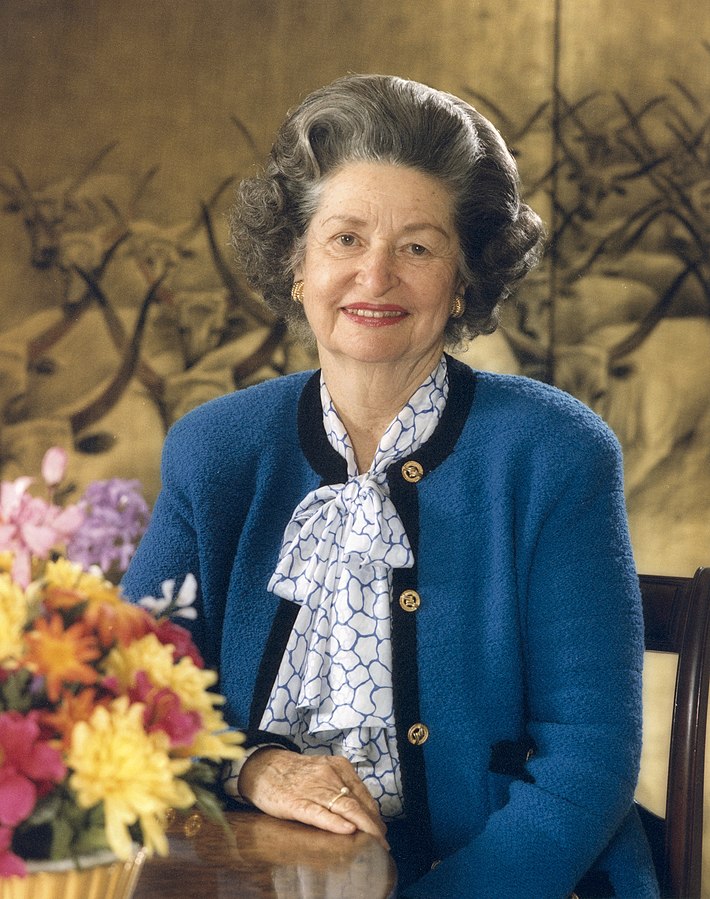A Legacy of Scenic Beauty
Born Claudia Alta Taylor on December 22, 1912 near Karnack, Texas, Lady Bird Johnson was a hero to Scenic America and the entire scenic conservation movement. Through her advocacy, she was instrumental in promoting the Highway Beautification Act (HBA), which first inspired, and continues to inspire Scenic America’s work.
There has not been a First Lady as attuned to nature and the importance of conserving the environment as Lady Bird.
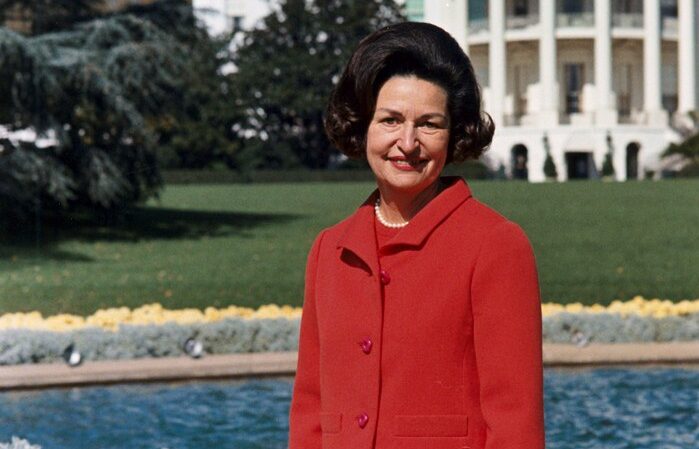
Early Life and Career
Growing up, Lady Bird was a shy and quiet girl who liked to spend most of her time outdoors, walking, fishing, and swimming. Her childhood helped develop her lifelong love of the outdoors. Lady Bird was an excellent student who loved classical literature. She graduated from Marshall Public High School in 1928, third in her class at the age of 15. She earned a BA in History in 1933 and Bachelor’s of Journalism Degree in 1934, both from University of Texas at Austin.
Lady Bird married Lyndon B. Johnson on November 17, 1934 in San Antonio, Texas, three months after first meeting. They later had two daughters, Lynda and Luci.
When Lyndon decided to run for Congress, Lady Bird used $10,000 of her inheritance to launch his campaign, jumpstarting his political career. When he won the Congressional seat, the couple settled in DC. Lady Bird was his confidante, partner, and helper throughout his political career. After Lyndon volunteered for naval service during World War II, Lady Bird kept his Congressional Office running, and in 1955, when he had a severe heart attack, she once again kept things running smoothly until he could resume his duty as Senate Majority Leader.
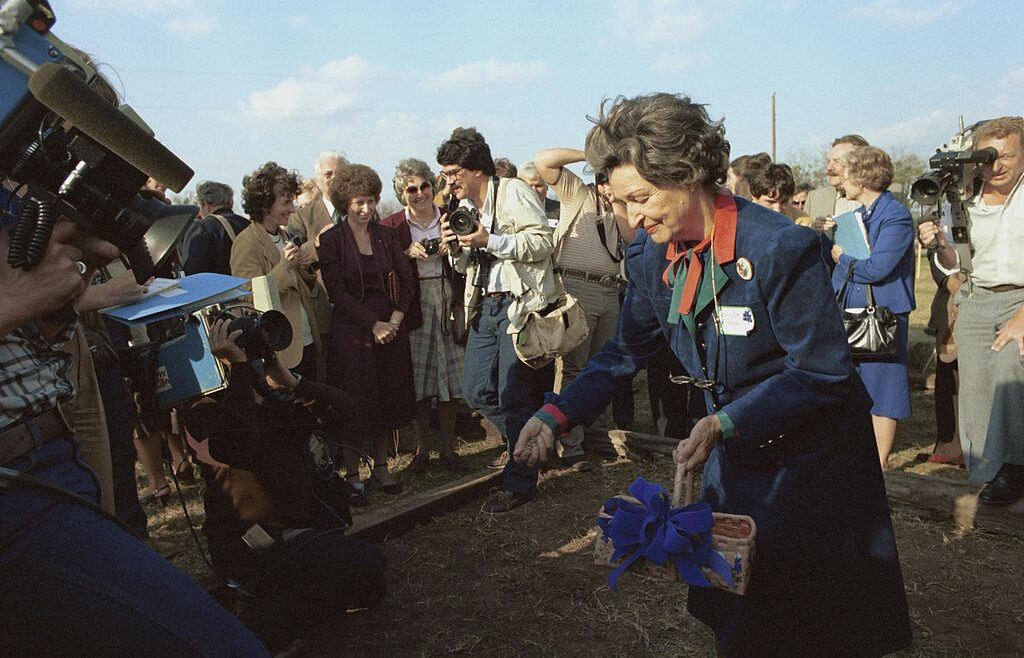
A Spirit of Activism
Growing up, Lady Bird was a shy and quiet girl who liked to spend most of her time outdoors, walking, fishing, and swimming. Her childhood helped develop her lifelong love of the outdoors. Lady Bird was an excellent student who loved classical literature. She graduated from Marshall Public High School in 1928, third in her class at the age of 15. She earned a BA in History in 1933 and Bachelor’s of Journalism Degree in 1934, both from the University of Texas at Austin.
Lady Bird was an active and involved First Lady. She started a capital beautification project, called the Society for a More Beautiful National Capital, which was intended to improve physical conditions in DC, for both residents and tourists, by planting millions of flowers, many of them on National Park Service land along the roadways around the capital. She also worked extensively with the American Association of Nurserymen to protect wildflowers and promoted planting them along highways. Her efforts inspired similar programs throughout the country. Lady Bird went on to create a First Lady’s Committee for a More Beautiful Capital, which was later expanded nationwide. She also took a highly active role in her husband’s War on Poverty program, especially the Head Start project for preschool-aged children. She created the Jacqueline Kennedy Garden and the Children’s Garden on the White House South Lawn too. Lady Bird traveled over 100,000 miles during 40 “Discover America” trips, in which she went white-water rafting, hiking, camping, walking the beaches, and exploring ancient forests, in order to prompt interest in the National Parks.
She became the first President’s wife to advocate actively for legislation when she was instrumental in promoting the Highway Beautification Act (HBA), which was nicknamed “Lady Bird’s Bill.” The HBA intended to protect natural and scenic beauty along federal-aid highways by, among other things, controlling billboards in rural, scenic, and agricultural areas.
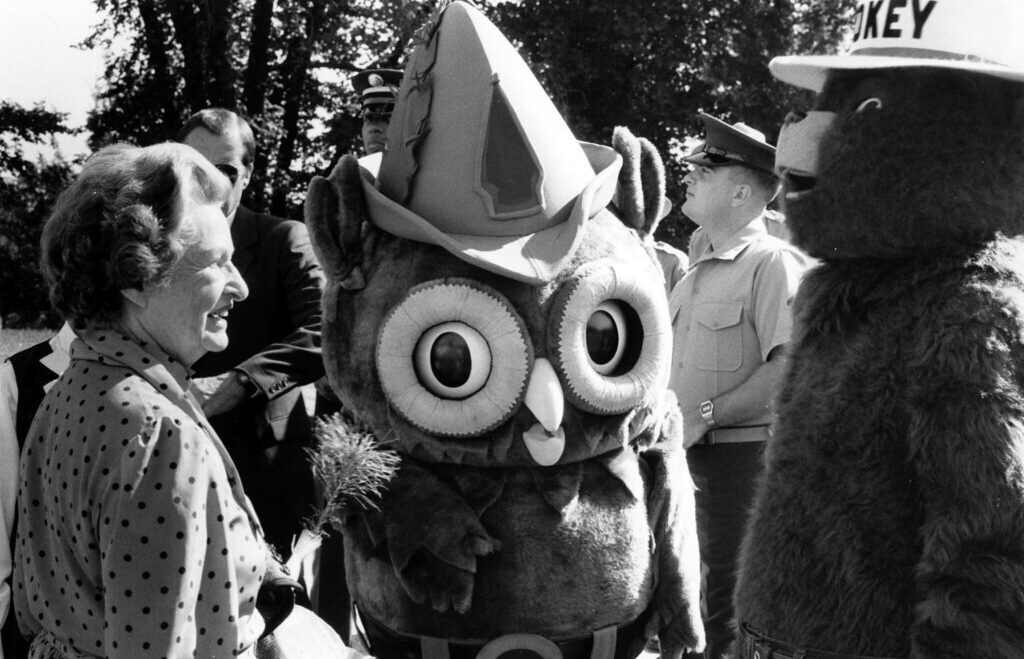
Her Legacy
Lady Bird transformed the Office of the First Lady, making it what we know today. She was the first to have a press secretary and chief of staff of her own. Her time as First Lady marked the beginning of the hiring of employees in the East Wing to work specifically on the First Lady’s projects. During the 1964 election, Lady Bird traveled through 8 southern states in her own train to promote the Civil Rights Act, at one point giving 45 speeches over five days. It was the first solo whistle-stop tour by a First Lady. She was also the only woman present when President Johnson signed the Civil Rights Act. In 1970, Lady Bird became the first First Lady to write a book about the White House years when she published A White House Diary, her intimate, behind-the-scenes account of her husband’s presidency spanning November 22, 1963 to January 20, 1969. Beginning with President Kennedy’s assassination, she recorded the momentous events of her time, including the Great Society’s War on Poverty, the national civil rights and social protest movements, her activism on behalf of the environment, and the Vietnam War. Lady Bird became the first First Lady to hold the Bible as her husband took the oath of office on January 20, 1965, a tradition that still continues today.
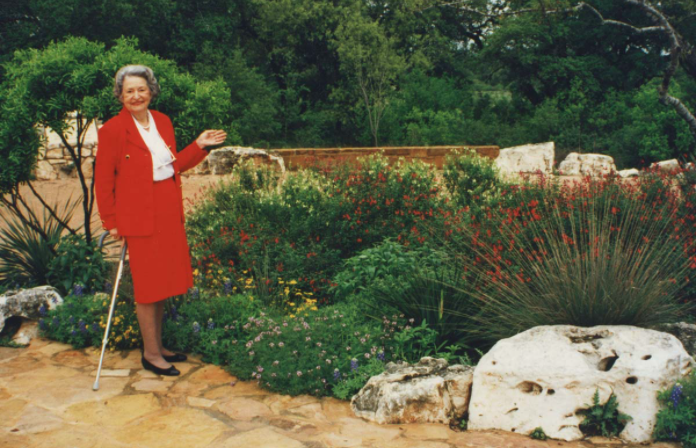
Business Ventures
Lady Bird was also a successful businesswoman. She invested in large ranching properties, which she also managed. During WWII, she purchased KTBC, an Austin, TX radio station. She served as President of the LBJ Holding Co., which negotiated an agreement with the CBS radio network. Against her husband’s wishes, Lady Bird decided to expand the business by buying a TV station in 1952 with part of her inheritance. This station generated revenues that made the couple millionaires. Eventually, Lady Bird’s initial $41,000 investment turned into more than $150 million for the LBJ Holding Co. She was the first President’s wife to have become a millionaire in her own right before her husband was elected to office. Lady Bird remained involved with the company until she was in her eighties.
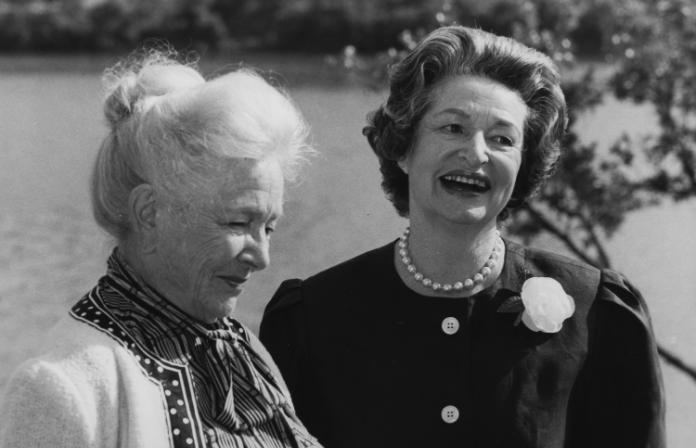
Her Passion for Beauty
After Lyndon’s death in 1973, Lady Bird was dedicated to her husband’s memory, her children, and her grandchildren. She also continued to support the causes she was passionate about. In the 1970’s, Lady Bird was involved in the Town Lake Beautification Project in Austin, TX, which focused on cleaning up the lake and adding trails to its shoreline. From 1971-1977, she served on the Board of Regents for the University of Texas System. She also served on the National Park Service Advisory Board on National Parks, Historic Sites, Buildings, and Monuments, and as a trustee of the American Conservation Association. Lady Bird was the first woman to serve on the Board of the National Geographic Society, as a trustee emeritus. From 1981-1983, she served as a co-chair of the fundraising committee for the Rockefeller Center for the Social Sciences. In 1983, Lady Bird joined Betty Ford on the steps of the Lincoln Memorial at a rally pushing for the ratification of the Equal Rights Amendment. In 1988, she attended the “Women and the Constitution” conference at The Carter Center, which promoted awareness about sexual inequality abroad and how to fight against it in America. Lady Bird spent a lot of her summers on Martha’s Vineyard, where she appreciated the island’s natural beauty and flowers.
In 1982, Lady Bird founded the National Wildflower Research Center, a nonprofit organization devoted to preserving and reintroducing native plants in planned landscapes. In 1997, it was renamed the Lady Bird Johnson Wildflower Center, and incorporated into the University of Texas at Austin in 2006.
Throughout her life, Lady Bird received many honors. In 1961, she was presented with the Businesswoman’s Award by the Business and Professional Women’s Club, and in 1963 with an Industry Citation from the American Women in Radio & Television. As a fundraiser for heart disease prevention, she received the Distinguished Achievement Award from the Washington Heart Association in 1962. In November 1968, Columbia Island in DC was renamed Lady Bird Johnson Park, in honor of her campaign as First Lady to beautify the capital. In 1969, President Nixon dedicated 300 acres of redwood trees in Redwood National Park as the Lady Bird Johnson Grove.
Lady Bird was awarded the Presidential Medal of Freedom by President Gerald Ford in 1977. She received the Congressional Gold Medal in 1988, becoming the first wife of a President to receive the honor. In 1995, she received the Golden Plate Award of the American Academy of Achievement. Also in 1995, she received an Honor Award from the National Building Museum for her lifetime leadership in beautification and conservation campaigns. Lady Bird also received awards from the Industrial Designers’ Society of America, Weizmann Institute of Science, Ladies Home Journal, the American Legion, Southern Baptist Convention, Lord & Taylor, American Horticultural Society, J.C. Penney, Motorola, National Wildlife Federation, Daughters of the American Revolution, Environmental Law Institute, and the Garden Club of America.
As a vocal advocate for women seeking higher education, Lady Bird held honorary degrees from Middlebury College, Texas Women’s University (Doctor of Laws), Southwestern University (Doctor of Humanities), and the George Washington University (Doctor of Public Service). She is the recipient of honorary Doctor of Humane Letters degrees from the University of Alabama, Southwest Texas State University in San Marcos, Washington College in Maryland, Johns Hopkins University, the State University of New York, Southern Methodist University, St. Edwards University, the University of Texas at Austin, Williams College, and Boston University.
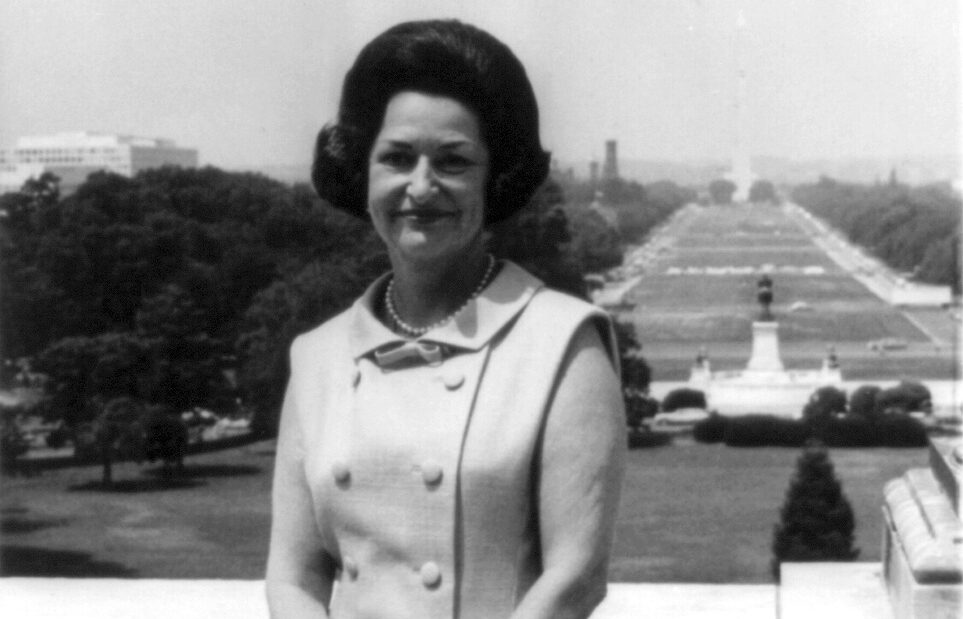
Even after her death, Lady Bird continues to be honored for her lifetime work. After her death, Austin’s Town Lake was renamed Lady Bird Lake in recognition of her work with the Town Lake Beautification Project. In April 2008, the Lady Bird Johnson Memorial Cherry Blossom Grove was dedicated in Marshfield, Missouri because of her support of their initiative to plant ornamental cherry trees. On June 7, 2008, Texas honored Lady Bird by renaming the state convention’s Blue Star Breakfast as the Lady Bird Breakfast, and in January 2009, St. Edward’s University in Austin completed a new residence hall bearing the name of Lady Bird Johnson Hall, or “LBJ Hall” for short. On August 28, 2008, Lady Bird Johnson High School was opened in San Antonio, Texas, a part of the North East Independent School District. On October 22, 2012, the United States Postal Service announced the issue of a souvenir Forever stamp sheet honoring Lady Bird Johnson as a tribute to her legacy of beautifying the nation’s roadsides, urban parks, and trails, and the stamps were officially dedicated on November 30, 2012, at the Lady Bird Johnson Wildflower Center. In 2013, Lady Bird was posthumously awarded the prestigious Rachel Carson Award. The award, presented by Audubon’s Women in Conservation, was accepted by her daughter Lynda.
Lady Bird Johnson’s legacy lives on in the movement she inspired. She taught us that beauty is not a luxury, and that the landscape has an intrinsic value that cannot and should not be ignored or debased. She wanted America the Beautiful to be more than just a song title; it should be a description of our way of life and an expression of our most cherished values. She leaves behind not just millions of acres of natural beauty, but millions of people, spurred to action by her example and courage, who share her commitment and passion for protecting our precious scenic heritage. Every time we see a field of wildflowers bloom, we will think of her and remember the debt our nation owes to this remarkable woman, one of the most beautiful spirits America has ever known. Scenic America continues to be inspired by her legacy and continues the work she started.
-
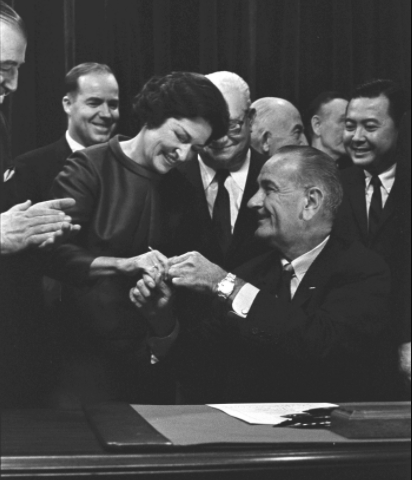 About the Highway Beautification ActKnown as "Lady Bird's Law," this 1965 legislation was designed to keep billboards and blight off of our highways.
About the Highway Beautification ActKnown as "Lady Bird's Law," this 1965 legislation was designed to keep billboards and blight off of our highways. -
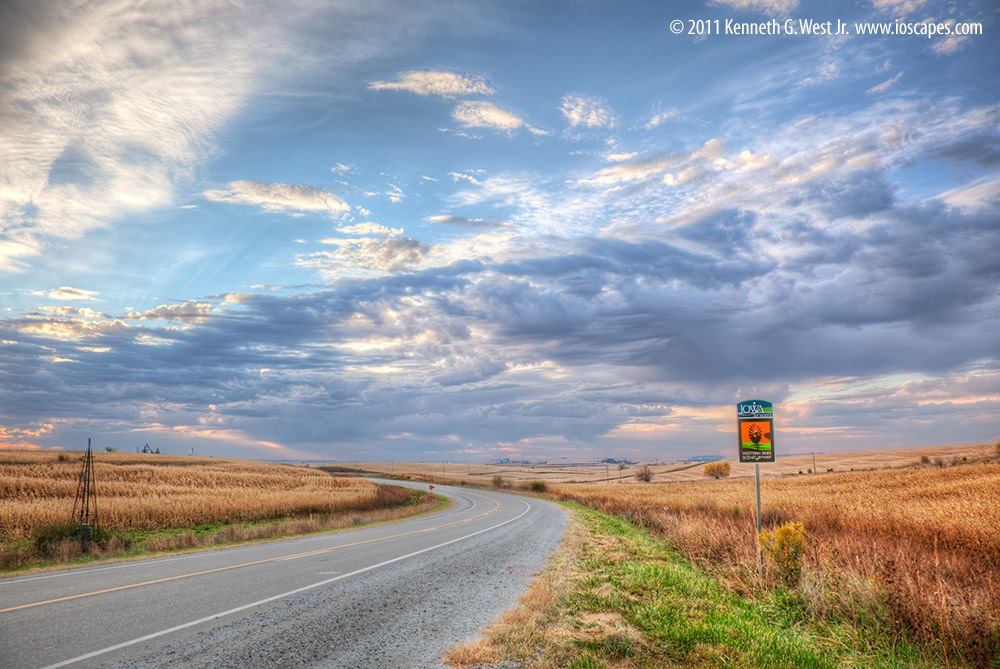 Our HistoryLearn more about Scenic America's history of fighting for scenic beauty.
Our HistoryLearn more about Scenic America's history of fighting for scenic beauty. -
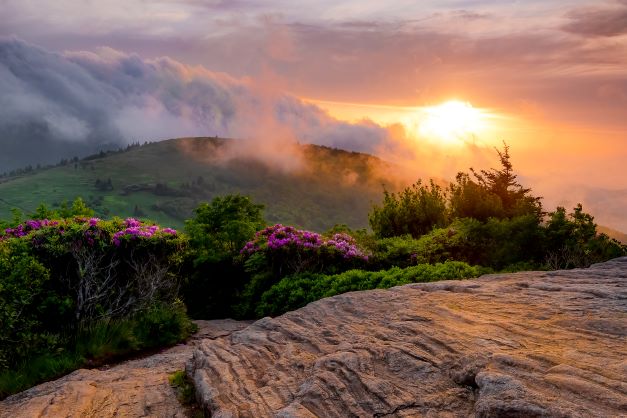 Why Scenic Conservation?Learn more about Scenic America's work and why it matters.
Why Scenic Conservation?Learn more about Scenic America's work and why it matters.
